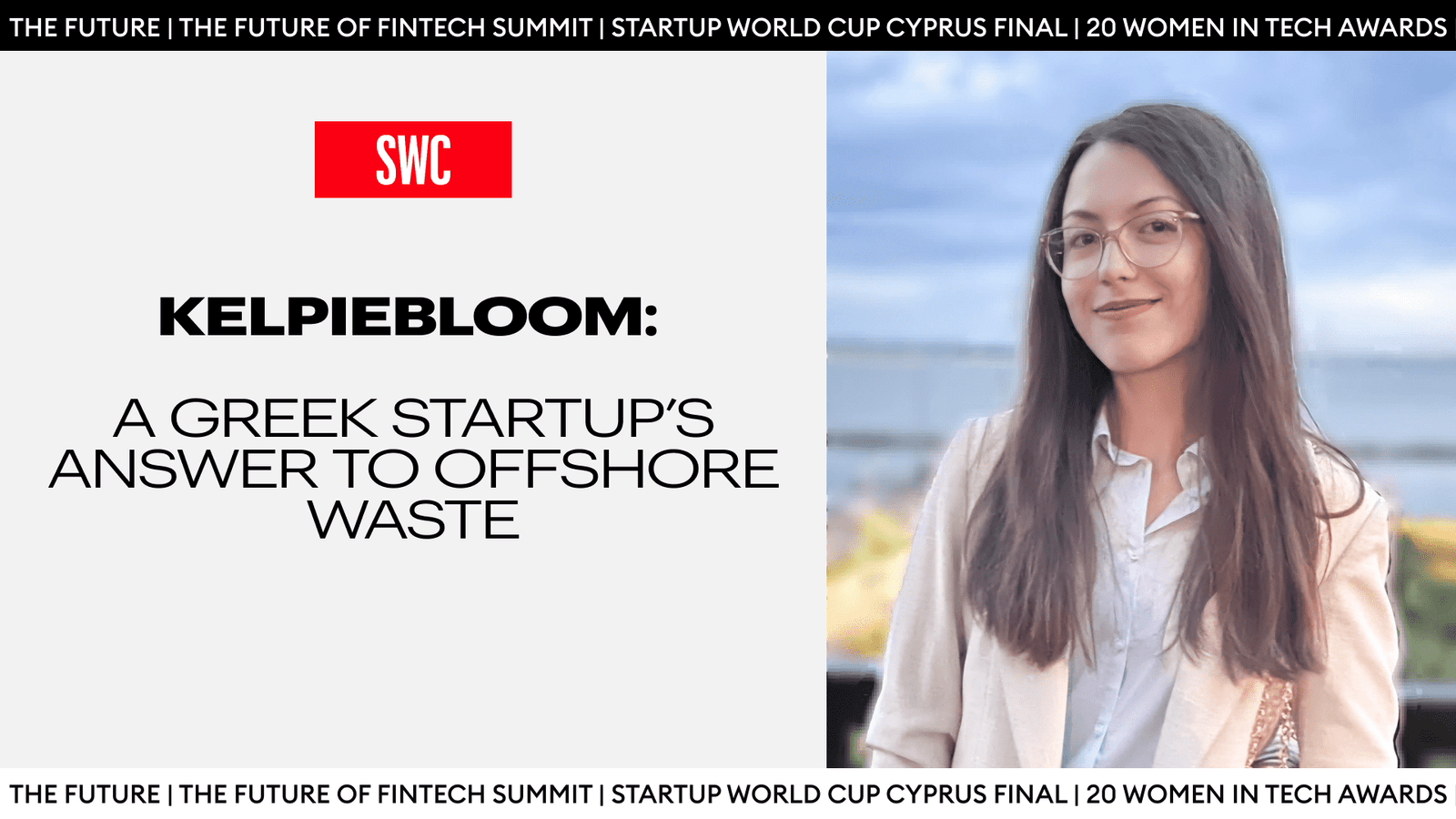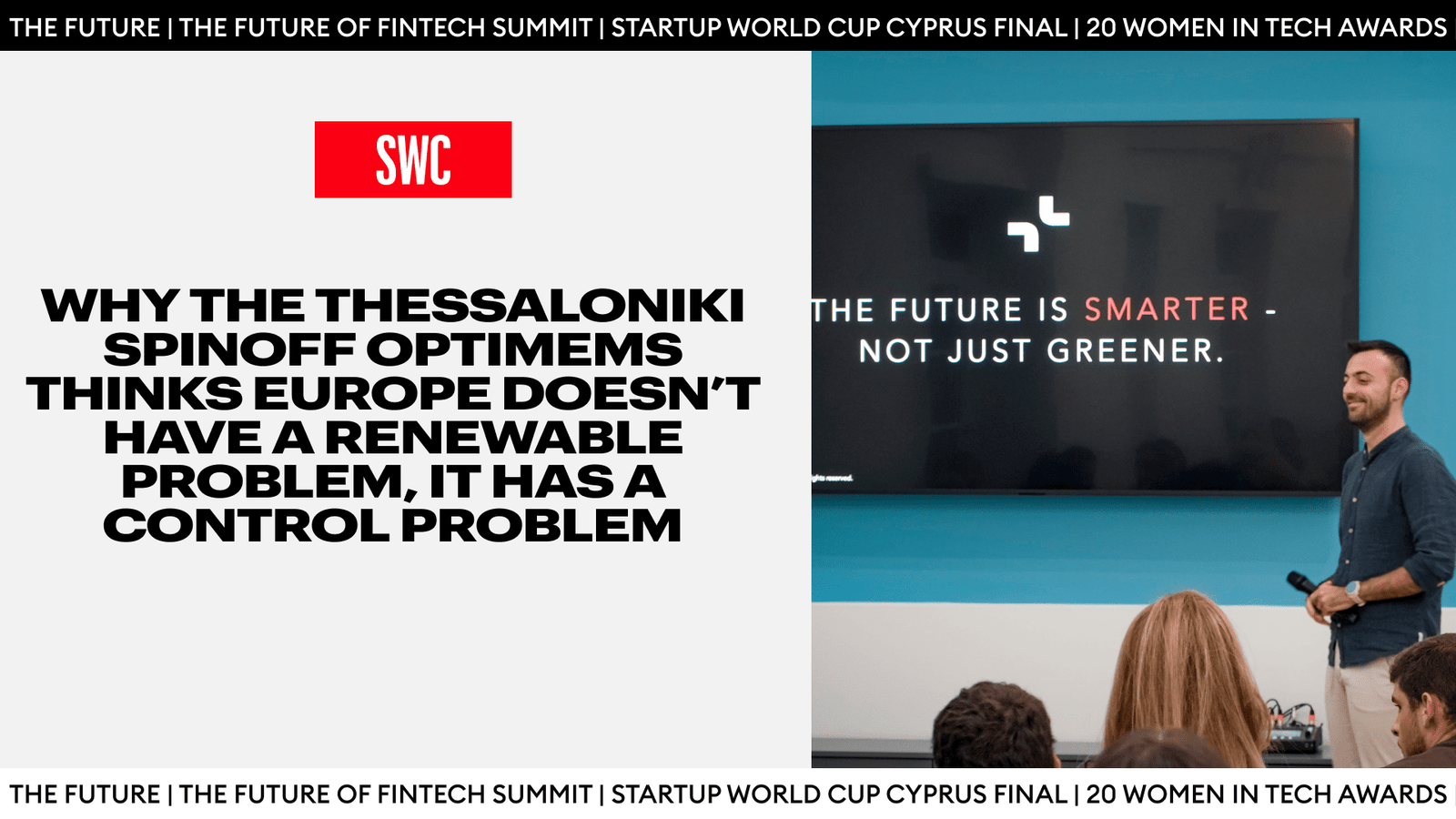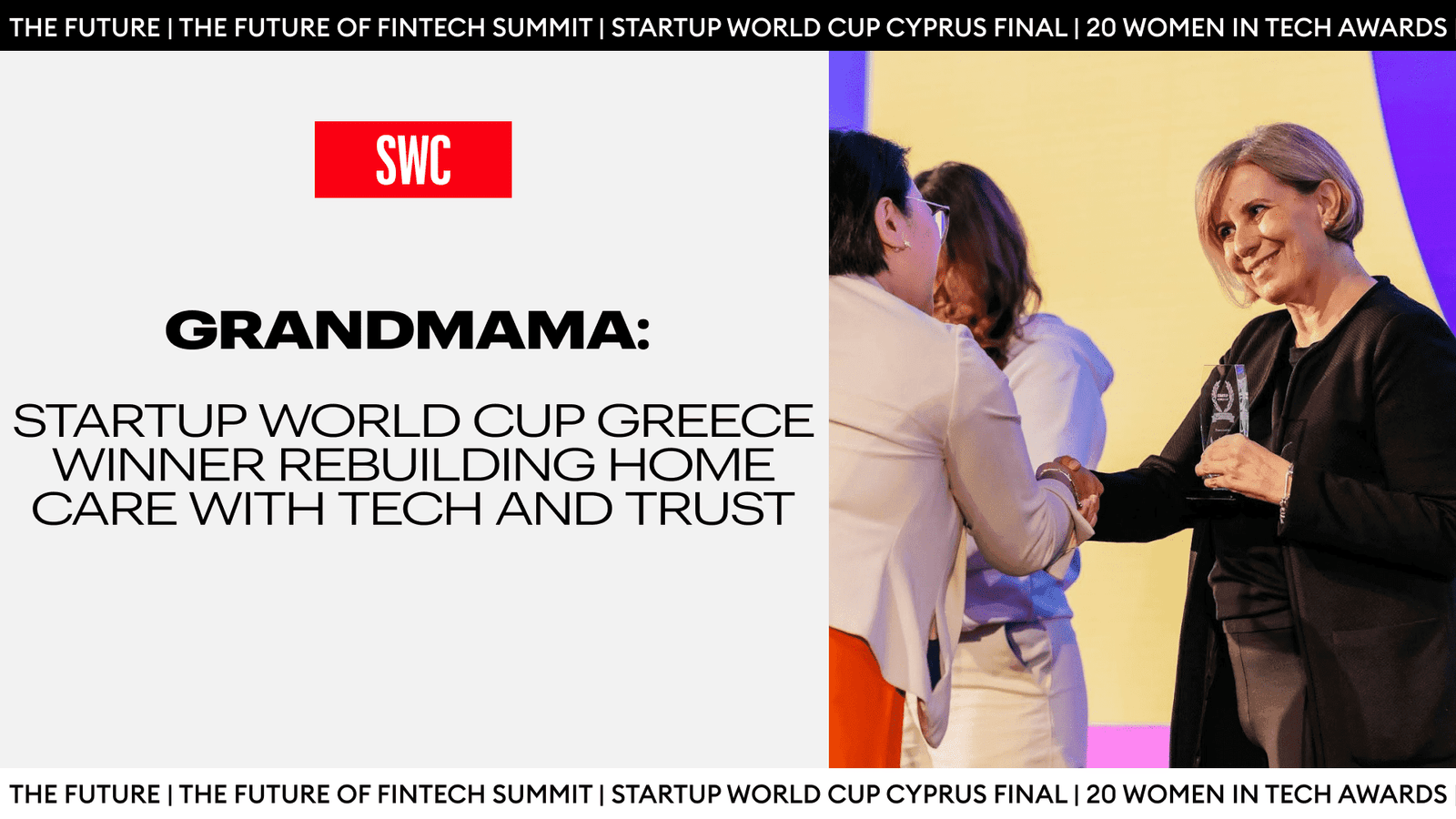Offshore oil platforms are retiring faster than the industry can afford to dismantle them. Over 7,000 are already abandoned. Full removal can cost $100 million per structure. Fines run up to $400,000 per platform, per year. And 10,000 more are expected to reach end-of-life by 2030.
At the 2025 Startup World Cup Greece finals in Athens, Georgia Antoniou proposed a different approach. Her startup, Kelpiebloom, transforms decommissioned oil and gas platforms into organic conservation units, which can actively reduce carbon dioxide and methane emissions, restore marine ecosystems, and create a new model for climate-positive ocean infrastructure
Follow THE FUTURE on LinkedIn, Facebook, Instagram, X and Telegram
In this interview with The Future Media, Georgia Antoniou, Founder and CEO of Kelpiebloom, shares how a university student competition inspired a systems-level rethink of offshore infrastructure, why algae could take advantage of the largest carbon sink on the planet, and how Greece’s emerging tech ecosystem is beginning to tackle global challenges.
What brought you into ocean climate work?
From the beginning of my Chemical Engineering studies, I saw how science could directly address one of the most urgent global issues of our time: climate change. The ocean is the planet’s largest carbon sink, yet it remains consistently undervalued and underestimated in mainstream climate solutions. That gap inspired me to explore how marine ecosystems, when combined with engineering, could become active contributors to global decarbonisation.
What problem were you seeing in platform decommissioning?
Decommissioning is one of the most expensive and environmentally detrimental processes in the energy sector. Platforms are either dismantled at tremendous costs or left as liabilities, perpetuating ecological harm and contributing to climate change.
Over 7,000 platforms worldwide are already abandoned, with oil companies paying up to $400,000 per year in environmental fines per structure. Full removal can cost $100 million each, and more than 10,000 additional platforms are expected to be retired by 2030.
The first time I observed this problem was when I took part in a competition called Invent for the Planet 2025. One of the topics we were asked to work on was the use of algae to combat climate change. It was something new for me, but the more I looked into it, the more I realised how valuable this solution could be. That’s when the idea started to bloom.
What moved you from seeing the problem to working towards a solution?
The turning point came during Invent for the Planet 2025, where one of the challenge topics was using algae to combat climate change. That’s when the idea started to bloom: what if we repurposed idle offshore infrastructure as a foundation for restoration? We realised existing platforms offer stable, deep-water structures already anchored in nutrient-rich zones. By combining that with engineering and biology, we could turn industrial relics into climate assets. That led to the founding of Kelpiebloom.
What is the main mission of Kelpiebloom?
Our mission is to transform decommissioned oil and gas platforms into organic conservation units, which can actively reduce carbon dioxide and methane emissions, restore marine ecosystems, and create a new model for climate-positive ocean infrastructure.
Where did the name Kelpiebloom come from?
The name brings together science and innovation. Kelp is derived from the Greek word for kelp, an algal species that inspired our first concept.
Bloom holds a double meaning. Firstly, it reminds us of the sound and processes of the sea. It also denotes scalable growth, expansion, and measurable impact. So, Kelpiebloom symbolises the shift from industrial relics into ecological rebirth.
How does your retrofit turn a decommissioned platform into a working kelp unit?
While the full technical design is still under development, at this point, I can share that we use modular engineering principles to adapt the existing infrastructure and enable algae cultivation at scale. So, the real innovation lies in how we combine biological growth with engineering precision, and that is what makes us unique.
How do you measure and verify carbon removal?
We adhere to strict scientific verification protocols. Our approach ensures both transparency and scalability. Our system produces verifiable and trusted data, aligned with international standards that are trusted by regulators, buyers, and partners.
Who is on your core team today?
Kelpiebloom brings together chemical engineers, marine scientists, and legal experts from the environmental space. I serve as the Founder and CEO. Our team is also supported by advisors from the start-up ecosystem.
Why did you choose to participate in Startup World Cup Greece this year, and what did you take away from the finals experience?
After winning Invent for the Planet 2025, we wanted to test Kelpiebloom in a broader innovation space, against founders, investors, and industry experts outside the environment and academic circle. The Startup World Cup was the perfect stage to challenge myself, refine my storytelling, and connect with global investors.

I left feeling energised after receiving more than I had thought: constructive feedback, incredible encounters with inspiring founders, and encouragement from people who actually understood and connected to our mission. I was also approached by various industry professionals with opportunities for introductions and partnerships, and we have some exciting news to announce in the coming months.
What does success look like for Kelpiebloom over the next two years?
In the short term, success means developing our MVP into a fully operational system. We are also looking to secure more partnerships with petroleum companies to scale the model and demonstrate verified carbon removal at a commercial scale. So, within two years, we aim to secure at least one abandoned oil rig a week as our first large-scale deployment.
Ultimately, success is proving that we can turn offshore infrastructure into ocean restoration.
What advice would you give to young entrepreneurs who are just at the beginning of their journey?
Be passionate about your idea and move forward no matter what. There will be, of course, people telling you that something is too difficult or impossible to accomplish. It may take years to find someone to believe in you. But the first person who needs to believe in your idea is you.







